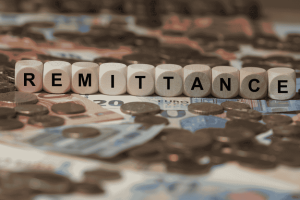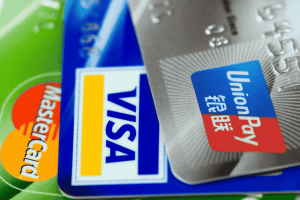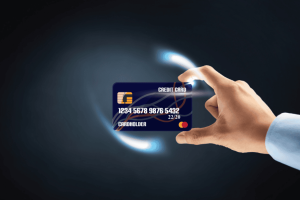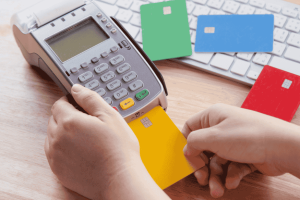Are you tired of waiting in line at the bank or dealing with outdated banking apps? In today’s fast-paced, hyper-connected world, your bank account should work for you—anytime, anywhere. If you value convenience, speed, and smart features, it’s time to rethink your approach to banking. Let’s explore how you can choose a bank account that truly matches your digital lifestyle and helps you manage your money with ease.
Why Your Bank Account Should Fit Your Digital Life
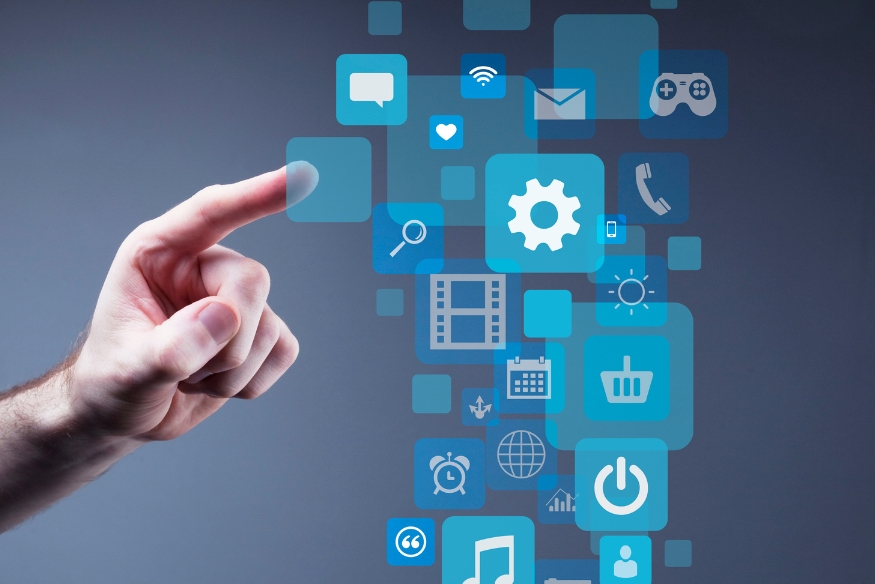
Your smartphone is your gateway to the world—so why shouldn’t your bank account be just as accessible? Whether you’re paying bills, shopping online, splitting dinner with friends, or traveling, a digital-friendly bank account can save you time, money, and stress.
Key benefits of a digital-first bank account:
- 24/7 access to your money
- Instant notifications and real-time tracking
- Seamless online payments and transfers
- Smart budgeting and financial management tools
- Enhanced security features
What Makes a Bank Account “Digital Lifestyle” Friendly?
In a world where most of our lives happen on screens, a truly digital-friendly bank account does more than hold your money — it enhances how you manage, move, and protect it. Here’s how to spot one that fits a modern, mobile-first lifestyle.
1. User Experience Starts With the App
Not all banking apps are created equal. For digital natives, the app is the bank. A well-designed interface that minimizes friction is crucial.
Look for:
- Fast login (biometric or PIN)
- Real-time balance updates
- In-app transfers and bill payments
- Optional features like mobile check deposit
Quick Tip: Try demo versions of the app (if available) before signing up. An elegant UI can make a huge difference in day-to-day use.
2. Low or No Fees — Because Digital Should Be Cheaper
One major benefit of digital banks is their ability to lower operating costs — savings that often get passed on to you. Some key fee-related features:
| Fee Type | What You Want to See |
|---|---|
| Monthly Maintenance Fee | None |
| ATM Withdrawal Fees | Free at partner ATMs, or reimbursed |
| Foreign Transaction Fees | Minimal or waived |
| Hidden Charges | Fully transparent |
3. Notifications That Actually Help
You shouldn’t need to log in just to find out your balance. A great digital bank keeps you informed automatically.
Here’s what useful notifications might include:
- Instant alerts for every transaction
- Custom low-balance warnings
- Weekly spending summaries
- Alerts for reaching budget limits
4. Online Payments, E-Wallets, and Peer-to-Peer Transfers
In a digital lifestyle, payments should be as simple as sending a message. Choose a bank that offers seamless integration with payment systems you already use.
Key Features:
- QR code payments (great for in-person use)
- Direct integration with platforms like GCash, GrabPay, or Apple Pay
- Easy peer-to-peer (P2P) transfers via phone number or email
5. Built-In Tools for Budgeting and Saving
Some digital banks go beyond just storing money—they help you manage it. Instead of downloading a separate budgeting app, look for built-in features.
💡 Did you know? Many digital banks offer “round-up” tools that automatically save your spare change from every purchase.
Other helpful tools include:
- Spending categorized by type (food, transport, etc.)
- Visual spending dashboards
- Goal-based saving (e.g., a travel fund or emergency savings)
6. Smart Security, Without Sacrificing Speed
You shouldn’t have to choose between convenience and protection. A well-designed digital bank account gives you both.
Common Security Tools:
- Two-factor authentication (2FA)
- Instant card freezing/unfreezing from the app
- Virtual debit cards for safer online shopping
- Real-time fraud alerts and responsive support
🧠 Quick Q&A: Are You Choosing the Right Account?
Q: Can I manage my account entirely through the app?
A: If yes, that’s a good sign. The app should let you do everything from opening the account to locking your card.
Q: Will I get charged random fees I wasn’t expecting?
A: Check the bank’s fee disclosure page. A true digital bank keeps it transparent.
Q: Can I link the account with my favorite e-wallet or payment service?
A: Compatibility is key to frictionless digital living.
Types of Digital Bank Accounts

As digital finance evolves, users can now choose between traditional banks with modern upgrades, fully digital banks (neobanks), and e-wallets. Each serves a different purpose and suits different lifestyles.
Traditional Banks with Digital Upgrades
Many established banks have adapted to the digital age. They now offer mobile apps, online banking, and even digital customer support. This allows users to enjoy the trust and full range of services that come with large institutions — such as loans, credit cards, and physical branches — while also benefiting from online convenience.
However, some still rely on outdated systems. This can limit features like instant updates or app integrations. Fees also tend to be higher, since maintaining physical infrastructure adds to operating costs. Still, for users who value stability and a wide product offering, traditional banks remain a reliable choice.
Digital-Only Banks (Neobanks)
Digital banks are built for the mobile-first generation. With no physical branches, they focus on speed, simplicity, and low-cost service. Account setup is usually fast, and many offer modern features like real-time spending insights, in-app savings goals, and chat-based customer support.
Because their overhead is low, neobanks typically avoid charging common fees. They’re ideal for everyday banking, especially for those who want more control over their money without visiting a branch. That said, some neobanks may not hold full banking licenses, relying instead on partnerships for regulatory compliance.
E-Wallets and Payment Apps
E-wallets like GCash, GrabPay, and ShopeePay aren’t banks, but they let users store, send, and spend money digitally. They excel at quick transactions, bill payments, and peer-to-peer transfers, often with smooth integration into shopping and lifestyle platforms.
While great for daily use, they come with limitations. Most don’t offer interest on balances, credit services, or robust security features. Deposit limits may apply depending on local regulations. They’re best used alongside a full bank account, not as a replacement.
Choosing the Right Mix
You don’t need to commit to just one solution. Many users combine all three: a traditional bank for savings and credit, a neobank for daily spending, and an e-wallet for quick, everyday payments.
What matters most is how well the tool fits your financial habits. In today’s digital world, flexibility is not just possible — it’s expected.
How to Choose the Right Digital Bank Account for You
1. Identify Your Priorities
Before opening a digital bank account, take a moment to reflect on what matters most to you. Are you someone who travels frequently or shops internationally and needs support for foreign currencies and cross-border payments? Perhaps budgeting has been a challenge, and you’d benefit from tools that help track spending and automate savings.
Consider whether easy access to ATMs is essential in your routine, especially if you often withdraw cash. And ask yourself: do you want your account balance to earn interest over time, or is convenience more important than returns?
These questions will help you narrow down the type of digital account that aligns with your lifestyle and financial habits.
2. Compare Features Side-by-Side
Understanding how different options stack up can help you make a smarter choice. Here’s a general comparison of key features across digital-only banks, traditional banks, and e-wallets:
| Feature | Digital-Only Bank | Traditional Bank | E-Wallet |
|---|---|---|---|
| Mobile App Quality | Often excellent, app-first design | Varies; improving but inconsistent | Simple and user-friendly |
| Fees | Typically low or zero | Often medium to high | Low to none |
| ATM Access | Limited to partner networks | Broad access via national networks | Very limited or not applicable |
| Budgeting Tools | Advanced tools and visualizations | Basic summaries at most | Decent, focused on spending |
| International Use | Frequently well-supported | Usually available but may incur fees | Rare or limited |
| Customer Support | In-app chat or email | Branch visits or phone lines | Chat or email within app |
This table can serve as a practical reference when comparing options that meet your initial priorities.
3. Read Reviews and Test the App
Don’t rely solely on advertisements or bank websites. App store ratings and customer reviews often reveal how the platform performs in real life—how fast transactions are processed, how reliable the app is, and how effective customer service actually is. You can also ask friends, coworkers, or online communities about their personal experiences. If you’re unsure, try downloading the app and exploring its interface. Many digital banks allow you to browse basic features or even open a free account without long-term commitments.
4. Check for Integration with Your Favorite Services
A truly convenient digital bank account should fit into your existing digital ecosystem. Does it connect smoothly with the payment platforms you use daily, like GCash, Apple Pay, or GrabPay? Can you sync your account with budgeting apps such as YNAB or PocketGuard? If you’re an online shopper, look for banks that support instant payment gateways and provide virtual cards for safer transactions. Integration isn’t just a luxury—it can save you time and reduce friction in your financial routine.
5. Consider Security and Regulation
No matter how sleek or feature-rich an account may seem, security should never be overlooked. Always verify that the institution is licensed by a reputable financial authority and that your funds are protected under a government-backed deposit insurance scheme. Look for transparent information about how your data is handled, what encryption protocols are in place, and what protections exist in case of fraud or unauthorized transactions. If this information isn’t easy to find, that’s a red flag.
RealLife Scenarios: Which Account Fits Best?
Choosing a digital bank account isn’t one-size-fits-all. The right fit depends on how you live, spend, and save. Below are a few everyday life scenarios and the account features that work best in each case.
- The Frequent Traveler will benefit from a digital bank that supports multiple currencies, offers low or no foreign transaction fees, and provides access to a wide network of global ATMs. Some banks even let you hold balances in different currencies, making international travel and shopping smoother.
- The Online Shopper should look for accounts that offer virtual debit or credit cards, allowing for safer online purchases. Instant purchase notifications and strong fraud detection features are also key to ensuring your shopping experience is both convenient and secure.
- The Budget-Conscious Saver needs a bank that helps track spending and reach financial goals. Accounts that include features like automatic budgeting, round-up savings, and customizable savings targets can make staying on track feel effortless.
- The Social Spender, who frequently splits bills with friends or sends money to family, should consider banks with peer-to-peer (P2P) payment options, contactless payments, and bill-splitting tools built right into the app. These features simplify group dinners, shared subscriptions, and everyday transfers.
Common Mistakes to Avoid
Digital banking comes with many advantages, but a few common missteps can lead to frustration or even financial risk. One of the most frequent mistakes is ignoring hidden fees. A bank may promote “zero fees,” but still charge for things like ATM withdrawals, currency conversion, or expedited transfers. Always read the terms carefully before committing.
Security is another area you shouldn’t overlook. Many users prioritize convenience but neglect to activate essential protections such as biometric login or two-factor authentication. These simple steps can dramatically reduce the risk of fraud.
Keeping your banking app up to date is also crucial. Updates often include not just new features, but also important security patches. Delaying them leaves your data exposed. Finally, using weak or recycled passwords is a major vulnerability. A strong digital banking setup starts with a strong password. Combine this with biometric login, when available, for maximum protection.
Quick Checklist: Is Your Bank Account Digital-Ready?
Not sure if your account meets the needs of your digital lifestyle? Here’s a final check to help you decide:
If your banking app is intuitive and easy to use, your fees are minimal, and you receive instant notifications after every transaction, you’re off to a good start. Add built-in budgeting tools, robust security features, smooth online payment capabilities, and responsive customer support, and you’re likely using a fully digital-ready bank account.
If most of these elements are already in place, congratulations — you’re well on your way to managing your money smarter, safer, and with far less stress.
Conclusion: Upgrade Your Banking, Upgrade Your Life

Your bank account should empower your digital lifestyle, not hold you back. By choosing an account that matches your needs, you’ll save time, reduce stress, and have more control over your money. The right digital bank account is more than just a place to store cash—it’s your financial partner in a connected world.
Ready to make the switch or optimize your current account? Explore your options, test the apps, and don’t settle for less than what your digital life demands.
Have tips or experiences with digital banking? Share your thoughts in the comments below! And if you found this guide helpful, pass it on to friends who want to bank smarter in the digital age.

